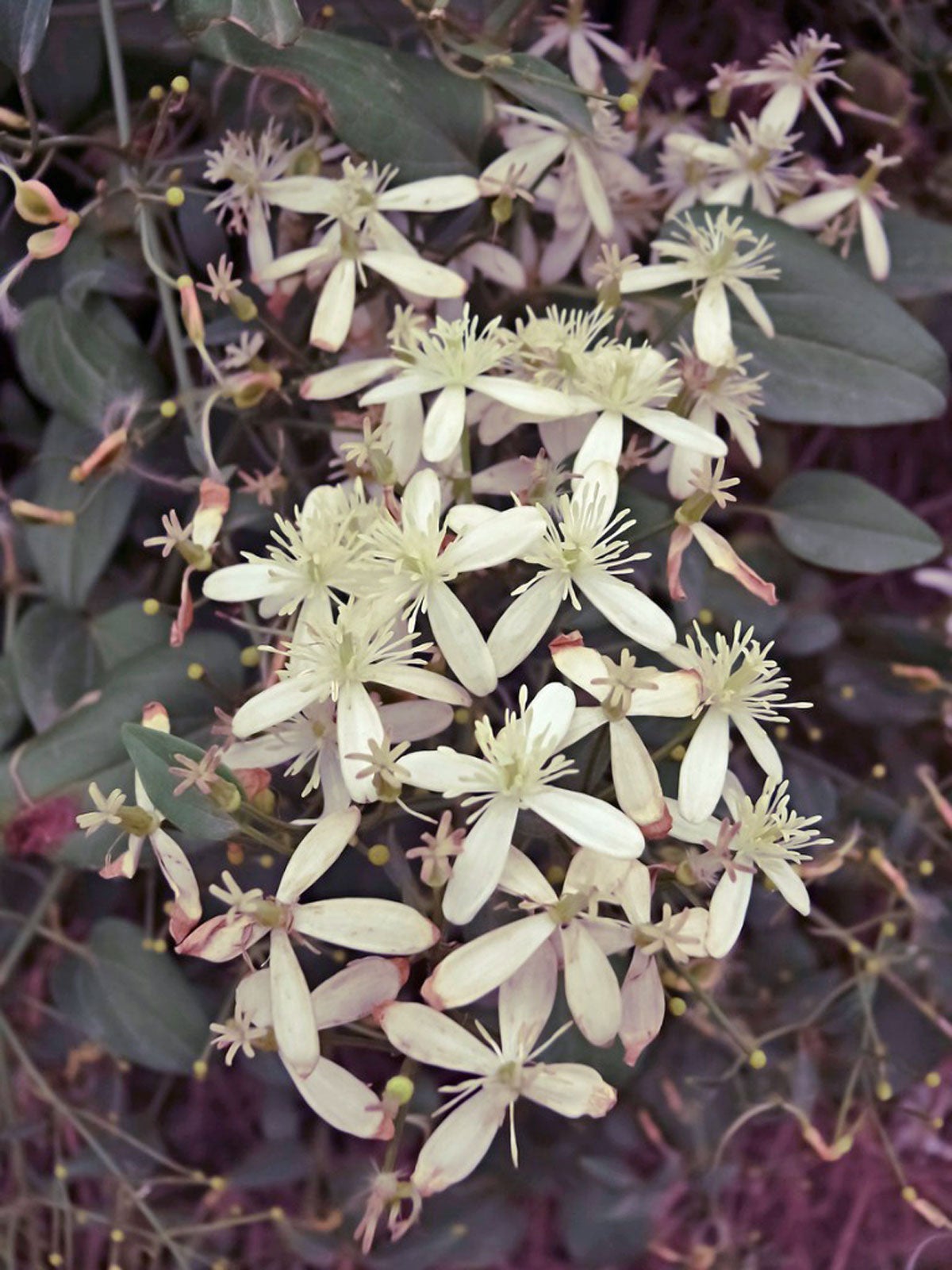Virgin’s Bower Facts – How To Grow Virgin’s Bower Clematis


If you're looking for a native flowering vine which thrives in a variety of light conditions, Virgin's Bower clematis (Clematis virginiana) may be the answer. Although the Virgin's Bower vine doesn't produce the large, showy flowers of other clematis varieties, like Nelly Moser or Jackmanii, it's one of the few vines which blooms proficiently in the shade.
Virgin's Bower Facts
Virgin's Bower clematis is native to eastern United States and Canada. This perennial, deciduous vine can be found growing in moist lowlands, thickets, and woodlands, especially those bordering streams and ponds. Virgin's Bower vine readily climbs natural elements like trees and shrubs. It can also spread along the surface of the ground, forming a dense foliage cover.
The Virgin's Bower vine has several common names including Italian clematis, woodbine, and devil's darning needle. Like other types of clematis, it climbs by wrapping its leaf petioles around an upright support. Here are some additional Virgin's Bower facts:
- USDA Hardiness Zones: 3 to 8
- Light Requirements: Full sun to shade
- Water Requirements: Moist soil
- Bloom time: Late summer or early fall
- Flower color: Pure white
- Height: Climbs to 20 feet (6 m.)
How to Grow Virgin's Bower
Virgin's Bower clematis is perfect for naturalizing those woody or wilder areas of the garden. It's fairly deer resistant and will readily grow along manmade structures like fences and trellises. The fragrant white flowers attract hummingbirds, butterflies, and bees while the dense green foliage serves as nesting sites for birds. All parts of the plant are toxic to mammals.
The Virgin's Bower vine prefers a rich, fertile loamy or silty soil with average to above average moisture levels. It grows best in partial shade. Virgin's Bower care is much easier than with other types of clematis and it has no reported insect or disease problems.
Is Virgin’s Bower Clematis Invasive?
Virgin's Bower is a fast-growing clematis which can aggressively spread across the garden. It propagates easily from wind-dispersed seeds and by the asexual formation of suckers. Luckily, these can be easily controlled in the garden setting:
Unlike other types of clematis, Virgin's bower is dioecious. Seed production requires both a male and female plant. To prevent seed formation, choose only male plants or purchase one Virgin's Bower vine and propagate through asexual means.
Gardening tips, videos, info and more delivered right to your inbox!
Sign up for the Gardening Know How newsletter today and receive a free copy of our e-book "How to Grow Delicious Tomatoes".
Virgin's Bower is a species of clematis that blooms only on new wood, so radical pruning won't affect flower production. It can be lightly pruned to control its shape anytime during the growing season or trimmed back to 8 to 12 inches (20-31 cm.) above the soil line in late fall or early spring.
Despite the need to control its vigorous growth, this clematis is not considered harmful to trees. With control measures, they can be a wonderful addition to a naturalized garden. Their profuse delicate white blossoms add an innocent charm to any fall-flowering garden bed.

Laura Miller has been gardening all her life. Holding a degree in Biology, Nutrition, and Agriculture, Laura's area of expertise is vegetables, herbs, and all things edible. She lives in Ohio.
-
 Looking For Plants To Give You The Soft And Fuzzies? Try These 5 Fuzzy Leaf Plant Options
Looking For Plants To Give You The Soft And Fuzzies? Try These 5 Fuzzy Leaf Plant OptionsLovers of texture, drama, silver foliage and tactile plants will adore these special sensory garden additions. These fuzzy leaf plant options will leave you all aglow
By Susan Albert
-
 Get Ready For A Summer Of Hummers! Grow These Full Sun Hummingbird Plants and Flowers
Get Ready For A Summer Of Hummers! Grow These Full Sun Hummingbird Plants and FlowersIf you’re lucky enough to enjoy a sunny backyard, make sure you are maxing out on your pollinator opportunities and grow these full sun hummingbird plants and flowers
By Tonya Barnett